We all know chugging at least 1 liter of water every couple of hours is non-negotiable for staying hydrated on any trail. Yet, when it comes to what we stash our water in, that often gets overlooked.
In my view, specialized water bottles should be the first investment for any hiker trying to complete their gear. They are reusable, which makes them eco-friendly and budget-friendly in the long run.
They also provide amazing features that make keeping hydrated on a hike easy and convenient. But what features exactly should you look for while buying your own bottle?
After years of trying out all sorts of hydration hacks, I’ve boiled it down to 8 must-have features in a water bottle that have seriously improved my hiking experience, and I believe they will make yours too!
#1 – Material
The right material is the most important factor to consider when choosing a water bottle for hiking because it affects weight, durability, and insulation.
The two most popular materials are plastic and stainless steel, but the latter is definitely a better option in my experience.
Stainless Steel
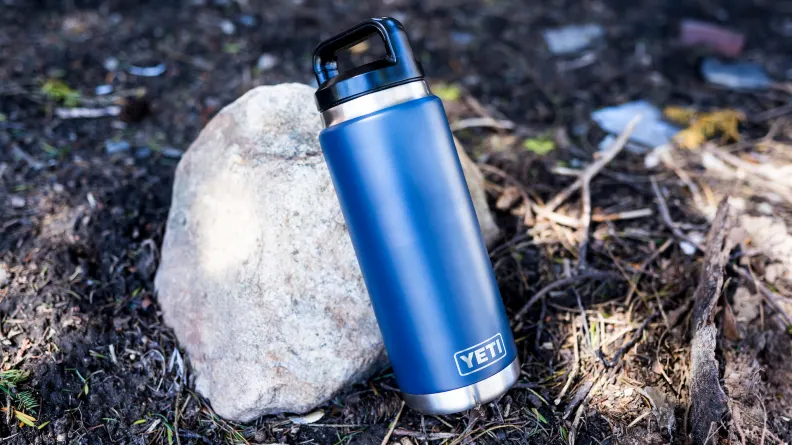
Stainless steel is tough, doesn’t hold onto flavors (so yesterday’s lemonade won’t taste like today’s water), and it’s great at keeping your drink cold or hot, thanks to insulation.
But, it has one major weakness – weight. Stainless steel bottles are heavier, so if you’re looking to keep your pack light, this might be something to think about.
For example, my all-time-favorite YETI Rumbler made from stainless steel is extremely durable and keeps my water cold even DAYS after I’ve started my hike. But it weighs 1 lb. 4 oz., which practically rules it out from ultralight trips for some hikers.
BPA-Free Plastic
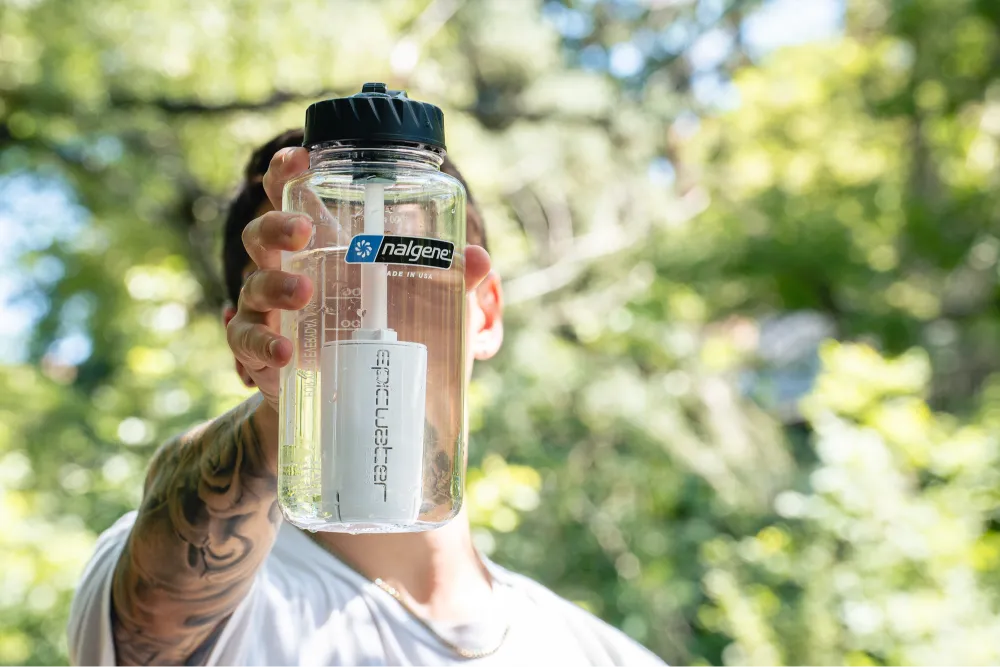
These are the lightweights, easy to carry, and won’t dent if you drop them. They’re great for a casual day hike.
The downside? They might not keep your drink cold or hot for long. And, even though they’re BPA-free, some folks still prefer to avoid plastic for health and environmental reasons.
The most popular bottles made from plastic are made by Nalgene, a brand renowned for its high-quality bottles that come in various sizes and colors. Most Nalgene bottles are made of Tritan, an impressive plastic that is tough, lightweight, and safe.
Aluminum
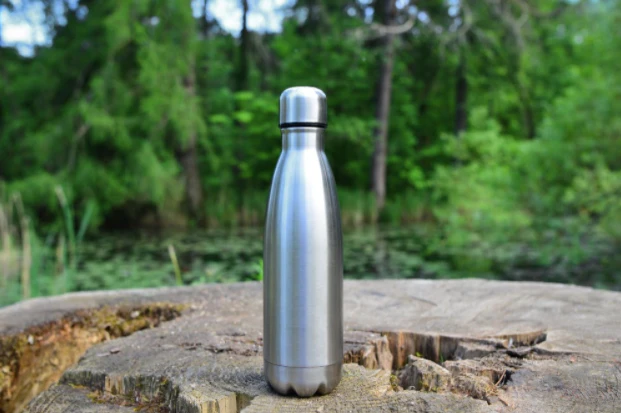
Aluminum bottles are kind of the middle ground. They’re lighter than stainless steel and often come with an inner coating to prevent metallic taste.
However, that lining can wear off over time, and they’re not as good at insulating. But for a cool drink on a not-too-hot day? They’re a solid choice.
Glass

If you’re all about taste and eco-friendliness, glass is unbeatable. Nothing keeps water pure and taste-free quite like it.
The obvious drawback is its fragility and weight. I wouldn’t recommend glass for rugged trails, but for a light walk or if you’re sticking close to camp, it’s a nice choice.
What’s the Best Choice for You?
It boils down to what you value most. Is it the taste of your water? The temperature it stays at? How much weight you’re carrying? Or maybe it’s about reducing plastic use.
Personally, I use stainless steel for tough, long hikes where I need my drink to stay a certain temperature for hours.
For shorter, easier trails, I go with BPA-free plastic or aluminum to keep my pack light.
#2 – Capacity
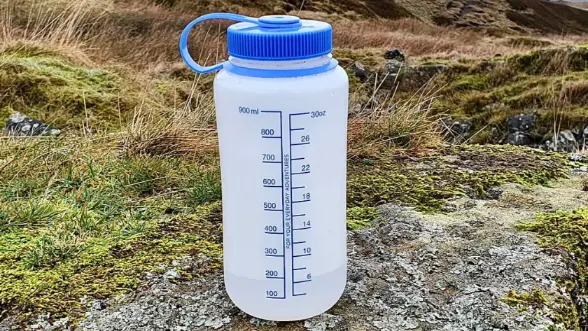
The rule of thumb I swear by is aiming to drink at least 1 liter of water for every 2 hours of hiking.
This means if you’re planning a day-long hike, a water bottle that holds about 2 to 3 liters is your best choice.
However, for shorter, say 2- to 4-hour hikes, a 1-liter bottle should be more than enough.
Now, here’s where it gets a bit personal. We all hike differently. Some of us sweat more than others, and others are more like cacti, conserving every drop of water.
That’s why it’s so important to listen to your body and adjust accordingly. If you find yourself always running out of water, it’s time to size up. Or, if you often come home with a half-full bottle, maybe it’s time to downsize and lighten your load.
Also, think about the availability of water sources along your trail. If you’re hiking somewhere with plenty of streams or lakes (and you’ve got a bottle with a water filter), you can get away with carrying less. But if you’re trekking through areas where water is rare, pack extra.
#3 – Insulation
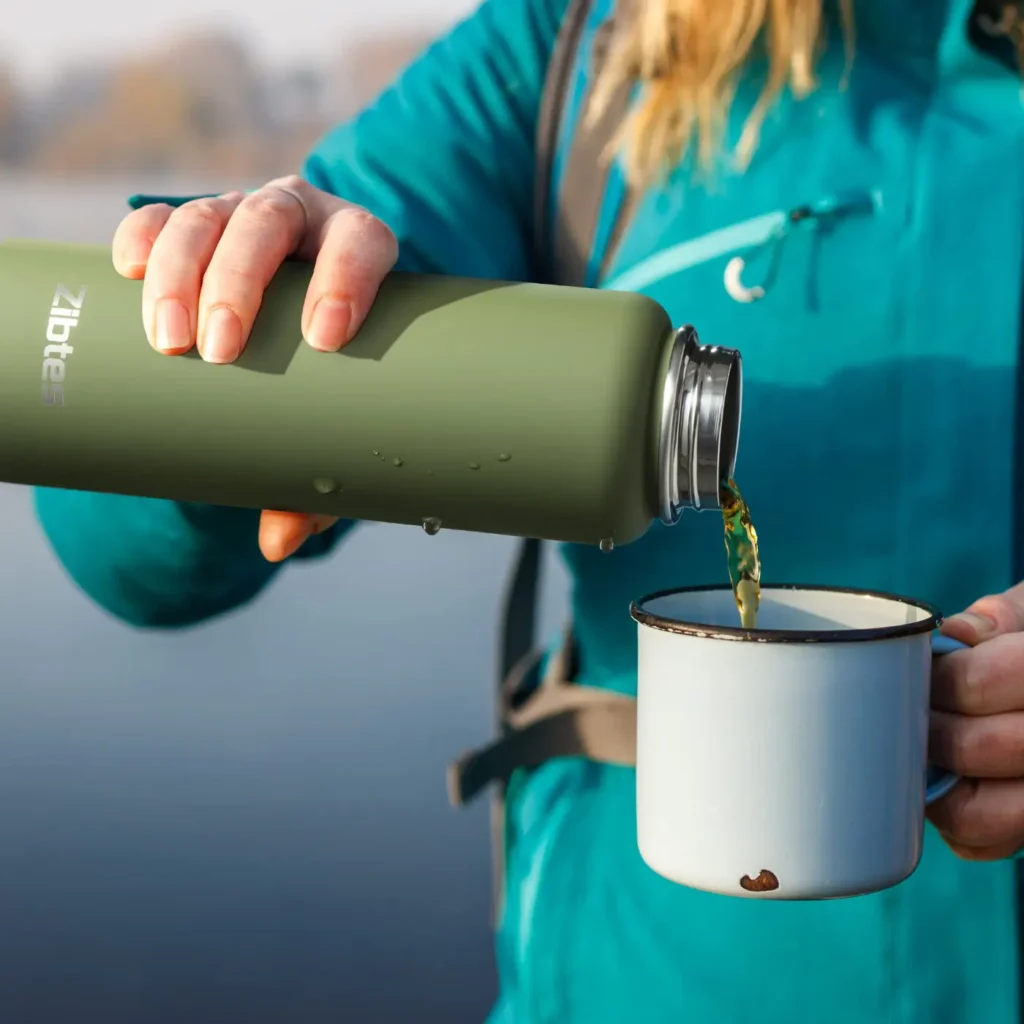
Insulation plays a major role in keeping your water at the desired temperature. It’s an especially important feature for cold-weather hikes because no one wants to drink ice-cold water when they’re already freezing.
For the best insulation possible, look for stainless steel with double-wall vacuum insulation (YETI Rambler is my choice here again).
This technology is like a thermos but cooler (or hotter, depending on what’s inside). It works by having two walls with a tiny gap in between that sucks out all the air (a vacuum, hence the name). No air means less temperature change, so your drink stays how you want it.
Pay Attention to the Lid
A bottle’s lid also plays a huge role in its insulation abilities. Some lids are better at preventing heat transfer than others. Look for ones that screw on tightly and maybe even have a bit of insulation themselves.
A popular flip-top might be convenient, but it could also be where heat sneaks in or out.
#4 – Weight
A heavy bottle can drag you down, making your hike harder than it needs to be. On long hikes, especially, choosing a lightweight bottle can save you a lot of energy. But remember, going too light might mean giving up on durability.
Ideally, your bottle should weigh less than a pound (450 grams) when empty. This weight is versatile enough to carry around on most hikes while also being durable enough to withstand the rigors of hiking.
If you’re thinking about lightening your load, the HydraPak Flux is nearly the perfect choice. It weighs only 5 ounces and can still hold 50 fl. oz. of water. It is also collapsible, so it can easily fit in your pocket.

Size and Shape Do Too
It’s not just about how much it weighs but also how it fits in your pack. A sleek, slim bottle might weigh the same as a shorter, wider one, but one of them is going to be easier to pack.
Think about where you’re going to store it. Side pocket? Inside the pack? This should influence your choice.
The dimensions I’m usually looking for are around 9 inches (23 cm) tall and 3 inches (6.35 cm) in diameter. This size is just right for most side pockets and backpack sleeves.
#5 – Leakproof Design

You’ve probably had your fair share of leaky water bottle disasters. A leakproof bottle keeps your gear dry, your spirits high, and your water where it belongs – in your bottle.
Cap Design
The cap is where most leaks happen. You want a cap that screws on tightly and securely. Some bottles come with a little extra – a rubber or silicone seal inside the cap. This seal ensures that your bottle is truly leakproof.
Get a Grip on the Threads
The part where the cap screws onto the bottle? Those are the threads. Good threads should feel smooth when you’re screwing the cap on, not gritty or loose. Poorly made threads can be a recipe for leaks.
Bottle Material
Hard plastic or stainless steel tend to be the most leakproof options out there. Soft plastic can warp over time (especially if you wash it in really hot water), which might lead to leaks. Stainless steel is tough and keeps its shape, helping ensure a tight seal every time you close it up.
One-piece Body
Bottles that are all one piece from top to bottom are less likely to leak than those with parts glued together. Seems obvious, but it’s something a lot of people overlook!
#6 – Ease of Use
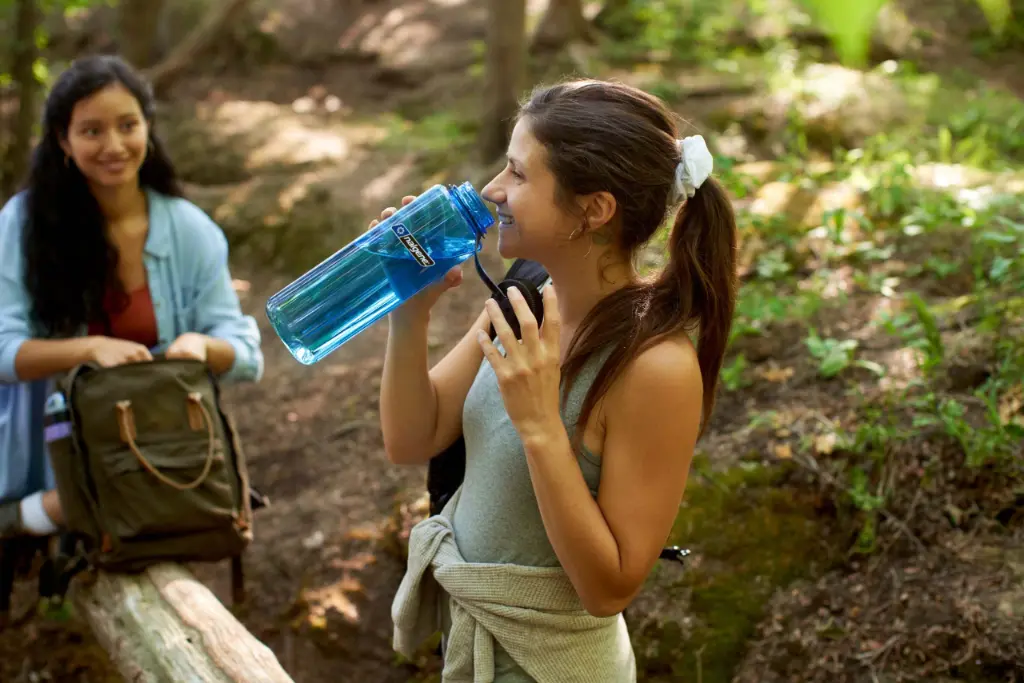
The type of cap is an important factor in how easy a bottle is to use. Personally, I love bottles with wide mouths. They’re a breeze to open, and filling them up at a stream or tap is very easy. Also, cleaning them doesn’t require a bottle brush or tiny hands.
Another aspect to consider is how easy it is to drink from the bottle. Look for a straw or flip-top spout if you prefer quick sips on the go, or a screw-on cap with a wide enough opening for easy gulps.
The Owala FreeSip is a water bottle that allows me to drink in two different ways: sip upright through the straw or tilt back to swig from the wide-mouth spout opening. I haven’t seen another water bottle that makes drinking so natural and easy.
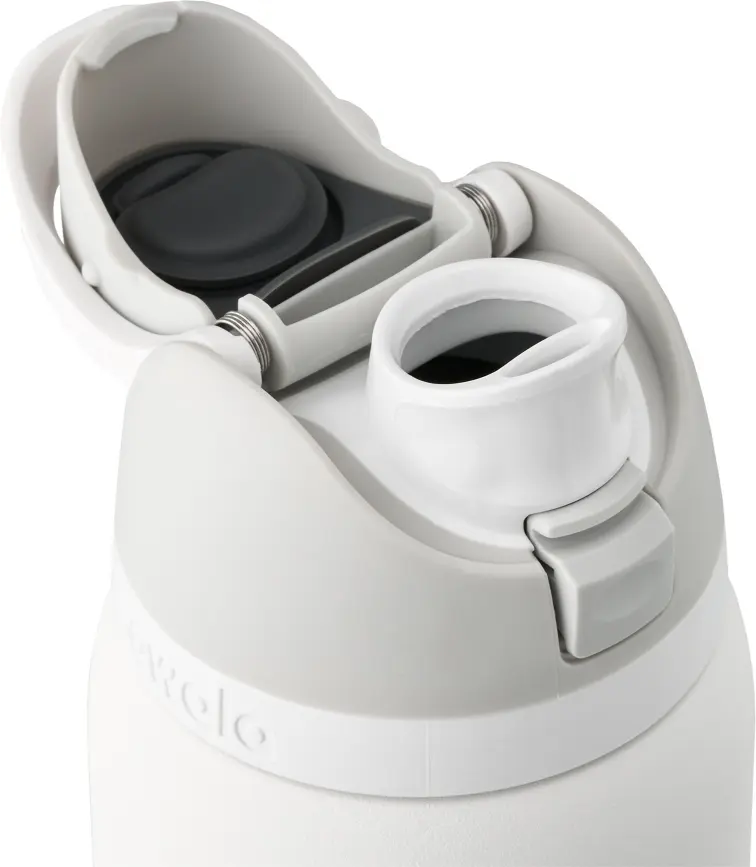
Easy to hold design is equally important. Make sure the bottle is comfortable to grip, and that it’s not so smooth that it slips out of your hand easily. Some bottles come with additional features like finger grips or rubber coating for better grip.
#7 – Compatibility with Water Filters
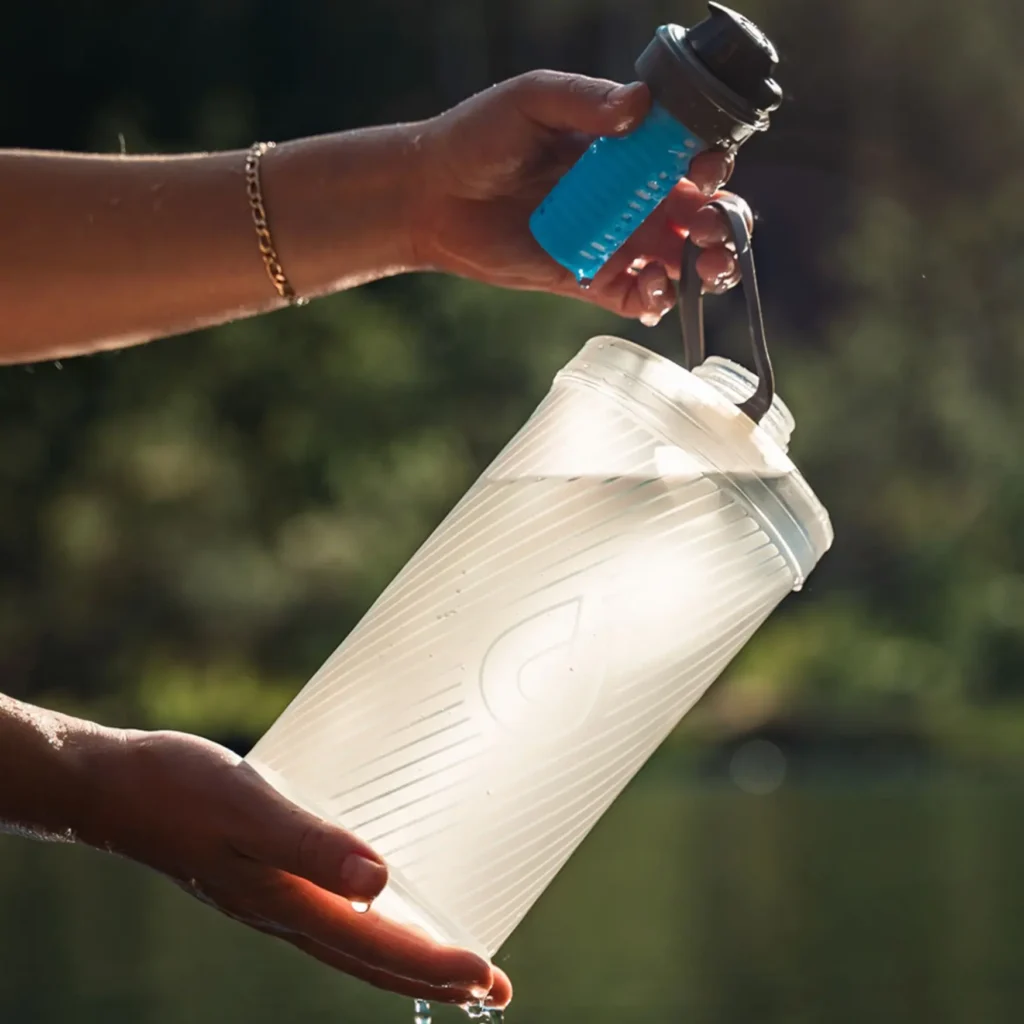
Streams and lakes look clear but they can harbor viruses such as giardia and bacteria like E. coli. If you plan on using a water filter, make sure the bottle is compatible with it.
Some bottles come with built-in filtration systems, which sound great, but these systems can sometimes be more of a hassle than they’re worth if they’re tricky to clean or replace.
That’s why I lean towards bottles that are compatible with external filters. This way, you have flexibility and reliability, two things every hiker values.
Think About the Mouthpiece
Bottles with a wide mouth are generally the best option here. They’re much easier to fill up from shallow sources of water, and they fit most pump or gravity filters.
Threading
Some bottles have unique threading designs that only fit certain types of filters.
A good example is a “Sawyer squeeze” filter. It’s a favorite among hikers for its efficiency and ease of use, but it won’t fit just any bottle. You need one with standard threading, like those found on most commercial water bottles.
#8 – Environmental Impact
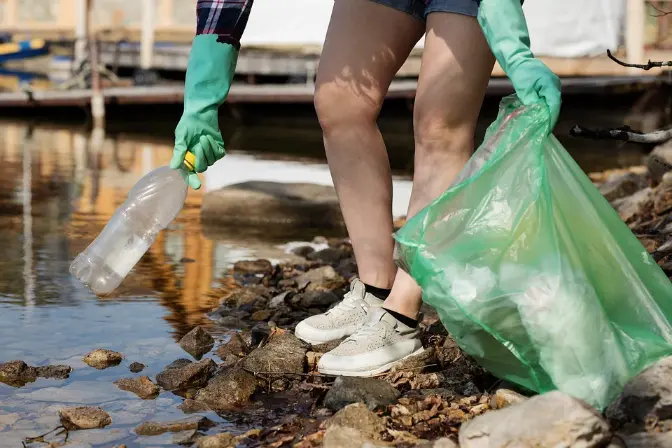
By using a reusable water bottle, you save an average of 156 plastic bottles annually per person. Imagine if every hiker did that. We could make a massive dent in the plastic problem.
First things first, plastic bottles are a no-go. Every year, millions of single-use plastic bottles end up in landfills and oceans. By picking a reusable water bottle, you’re already making a smart move.
But not just any reusable bottle will do. You need one that’s tough, long-lasting, and eco-friendly. Aluminum, stainless steel, and certain types of plastic (like Tritan) are all great options. They’re durable and recyclable.
Aluminum and stainless steel are champions when it comes to longevity. They can take a hit and keep on going, so you won’t have to replace your bottle anytime soon. Plus, they’re 100% recyclable.
Some plastics are okay too, especially if they’re BPA-free and designed for repeated use. Just make sure they’re recyclable and that you recycle them when it’s time for a new one.
Conclusion
Personally, I’ve got a collection of water bottles for every kind of hike, with sizes ranging from 16 fl. oz. all the way to a hefty 64 fl. oz. What I love about these bottles is their exceptional toughness and insulation, incomparable to disposable water bottles.
What’s more, when carrying a reusable bottle, I’m more likely to refill it with tap or filtered water instead of buying bottled water. This not only saves me money but also reduces the demand for single-use plastic bottles.
But you don’t need dozens of water bottles. Starting off with one that promises to be by your side for years is the way to go.
And if those additional features like filters or collapsible designs catch your eye, consider them as ways to enrich your hiking experience further.

Lukas Heller
Hey there! I’m Lukas, co-founder of BigfootHiking.com, alongside my adventurous wife Martha. Originally from Germany, I landed in Phoenix, Arizona, in 2015, where I’ve been scouting out new trails ever since (though they’re getting scarce!). By day, I’m a software developer, but my heart belongs to hiking – I’m always plotting our next trip. When I’m not coding or on the trails, you’ll find me hanging out with our Pit Bull, Zeus.


